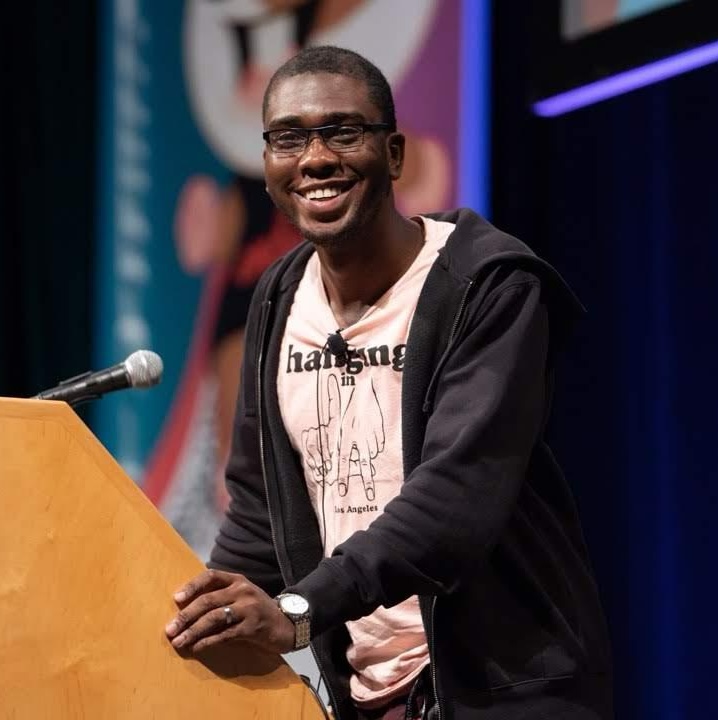| 09:00—10:00 |
Doors open & Breakfast |
| 10:00—10:30 |
But Why? A look at common patterns found on the web, how they are harmful for accessibility, and what to do instead.Components are one of Melanie’s favorite aspects of building Ember applications. A well-documented and structured design system can empower teams to create accessible applications more efficiently. However, components alone are not enough to ensure accessibility. In this talk, Melanie will unpack several common UI patterns frequently missing critical elements for digital accessibility. She’ll also provide actionable insights and practical steps that developers, designers, and accessibility advocates can implement to elevate the accessibility of web products. Attendees will leave equipped to critically analyze their own applications and take immediate steps to improve inclusivity. Melanie Sumner began building things for the web in 1997, and after all these years, it’s still her favorite thing to do. As the Product Accessibility Lead at HashiCorp, she develops accessibility strategies and offers guidance to the design system and product teams, working collaboratively to deliver inclusive, standards-compliant products. In addition to her role at HashiCorp, Melanie is an invited expert for the W3C’s ARIA working group and co-editor of the Accessible Name and Description Computation specification, playing an active part in advancing web accessibility standards. When she needs a break, Melanie enjoys brainstorming new collective nouns for the web (collective-nouns.dev) or unwinding with a game of Stardew Valley. |
| 10:45—11:15 |
From Monolith to Monorepo: The life story of a large legacy Ember appThe talk tells the story of a legacy monolith Ember app from its birth 7 years ago to its future final resting place. Like a trip down memory lane, I will discuss the current implications of past technical decisions, efforts made to modernise the app, the challenges of maintenance and the future story of the monolith. This story will be contrasted by describing a sibling Ember app at the same company, which is modern, easily maintainable and considered best-of-class. David is a Dublin-native who has been hacking Ember since 2014 and is currently employed at Phorest in the role of Front-end Staff Engineer. Now living in the West of Ireland, David enjoys the great outdoors and finds peace by the ocean and in the mountains. He is married to his cat, Fuzzybum. |
| 11:30—12:00 |
From React JS to Ember: A Newbie’s Comparative JourneyThis talk will draw from Toyib’s six years of React experience and his recent months with Ember.js to provide a rich, comparative analysis. It explores how Ember’s “convention over configuration” philosophy, built-in tools, and performance optimisations contrast with React’s flexible, component-based architecture, and discusses the strengths and challenges of each framework, offering practical advice on leveraging Ember’s features for efficient and scalable development. 
Toyib Olamide AhmedAs a Senior Frontend Engineer based in Dublin, Toyib leverages over six years of experience in JavaScript and React.js to build sophisticated, user-centric web applications. His background in cybersecurity engineering gives him a unique perspective on integrating security best practices into development. Through teaching and community engagement, he strives to help others navigate the tech industry and harness the power of frameworks like React and Ember. |
| 12:00—13:30 |
Lunch |
| 13:30—14:00 |
Memory leak found, now what?Memory leaks happen, and usually nobody cares about them until they get so worse as to cause a slow down or crash of the app. Bartłomiej was “lucky” enough to get to work on one which caused app tests to fail and another one which was discovered by a customer. In this talk, he shares his findings which go beyond the trivial examples many tutorials use in the hopes of helping others find their memory leak and fix it. |
| 14:15—14:45 |
Ready vs. Done: Striking the Balance Between Good and PerfectThis talk explores the debate between “ready” and “done,” highlighting their philosophies and practical impacts. “Ready” means the product meets specifications and is fit for user interaction, while “done” implies a state of perceived perfection with no further improvements needed. Stephen is a Senior Engineering Manager at Phorest. With a background in full-stack software development, he has worked on different types of projects and initiatives. Stephen also loves mentorship, helping to nurture the next generation of tech talent, and he strongly advocates for giving underrepresented folks opportunities. In his free time, he’s either missing flights in Brazil, traveling through South America, or dealing with the harsh Finnish winters because his daughter loves to build her snowman after school during winter. |
| 15:00—15:30 |
Moving MountainsImagine an old, mountain-sized project with many v1 addons. How do we convert these addons to v2 so that we can introduce Embroider? Move the mountain. Find out how creating another repo helps you solve a few tech debts at once. |
| 15:30—16:00 |
Snack break |
| 16:00—16:30 |
Lightning TalksThe Lightning Talks block is your chance to tell the audience about something you want to share, in 5-minutes or less. You’ll be able to sign up for it at the event. |
| 16:45—17:15 |
The Art of Data FetchingData fetching is absolutely crucial for all modern apps. Yet, it’s often an overlooked topic. You just get the data and render it, right? Nah. This talk will show you the common pitfalls, strategies, and patterns ready to apply to improve your app drastically when it comes to reliability, performance, and responsiveness. Tomek is a Principal Engineer at Phorest by day and a hacker by night 🤓 He spends most of his days on perfecting interfaces but he’s also very interested in how automation and processes can help teams to be very performant. He occasionally blogs and non-occasionally develops side-projects. |
| 17:30—18:00 |
Closing KeynoteEdward Faulkner is a member of the Ember Core Team, and the lead developer behind Embroider. His open source code is running on mainstream gaming consoles, major social media sites, and hordes of enterprise applications. He was a research associate of the MIT Media Lab’s Social Computing group, and was a lead engineer at Akamai Technologies, where he built critical, internet-scale security infrastructure. He earned an MEng and BS in Electrical Engineering and Computer Science at MIT. Ed resides in Somerville, Massachusetts with his wife and two sons. |
| 18:30—23:00 |
Closing Party at the venue 🎉 |
Day 2 Schedule
Sep 13, Friday
Times are local, CEST






